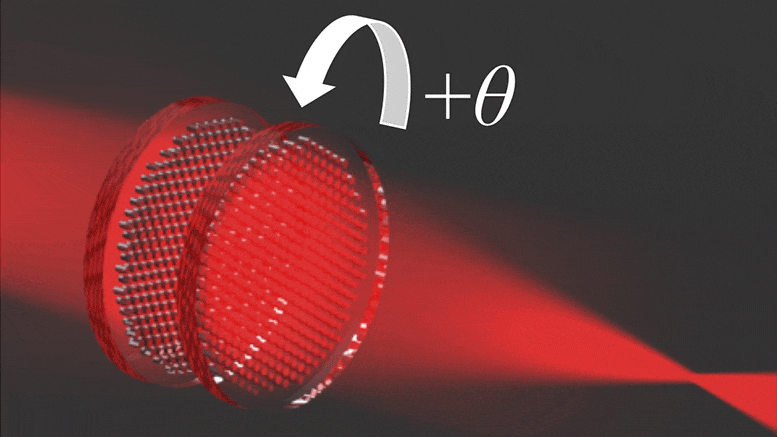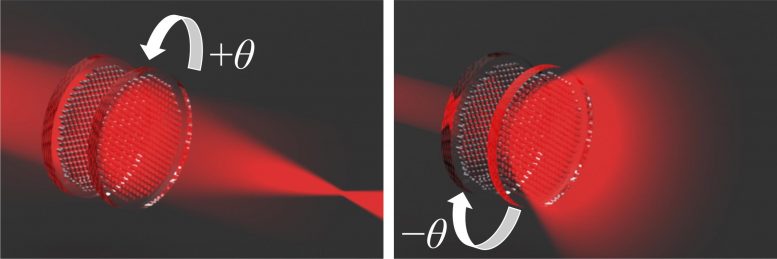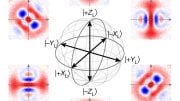
Researchers demonstrate moiré metalenses — tiny, patterned lenses composed of artificial “meta” atoms — can tune focal length along a wider range than previously seen.
The odd, wavy pattern that results from viewing certain phone or computer screens through polarized glasses has led researchers to take a step toward thinner, lighter-weight lenses. Called moiré, the pattern is made by laying one material with opaque and translucent parts at an angle over another material of similar contrast.
A team of researchers from Tokyo University of Agriculture and Technology, TUAT, in Japan have demonstrated that moiré metalenses — tiny, patterned lenses composed of artificial “meta” atoms — can tune focal length along a wider range than previously seen. They published their results in Optics Express, a journal of The Optical Society.
“Metalenses have attracted a lot of interest because they are so thin and lightweight, and could be used in ultra-compact imaging systems, like future smart phones, virtual reality goggles, drones or microbots,” said paper author Kentaro Iwami, associate professor in the TUAT Department of Mechanical Systems Engineering.
The problem, Iwami said, is that to keep the metalenses compact enough for use in the desired applications, they have a limited focal tuning range for sight. Focal length, measured in millimeters, is the angle of view and strength of magnification and is dictated by the lens shape.
A convex lens, which has a positive focal length, brings light rays to a single point, while a concave lens, with a negative focal length, disperses the light rays. When combined in varifocal lenses, the result is a more complete, sharper image — but tuning the focal length from negative to positive in something as compact as a metalens is tricky, according to Iwami.
“We found that wide-focal length tuning from convex to concave can be achieved by rotational moiré metalenses,” Iwami said.
The researchers developed metalenses with high-contrast artificial “meta” atoms composed of amorphous silicon octagonal pillars. When they overlaid one meta lens over the other, creating the moiré pattern, and rotated them, they could use infrared light to tune the focal length of the lenses.
Next the researchers plan to demonstrate wide-focal length tuning at a visible wavelength, and improve the quality of the lens, with the ultimate goal of realizing an ultra-compact imaging system.
Reference: “Demonstration of focal length tuning by rotational varifocal moiré metalens in an ir-A wavelength” by Kentaro Iwami, Chikara Ogawa, Tomoyasu Nagase and Satoshi Ikezawa, 9 November 2020, Optics Express.
DOI: 10.1364/OE.411054
This paper was co-authored by Chikara Ogawa, Tomoyasu Nagase and Satoshi Ikezawa.
This work was supported by the Nanotechnology Platform site at the University of Tokyo, which is supported by Japan’s Ministry of Education, Culture, Sports, Science, and Technology.










Be the first to comment on "More Metasurface Moiré Results in Thinner, Lighter Wide-Range Lenses"